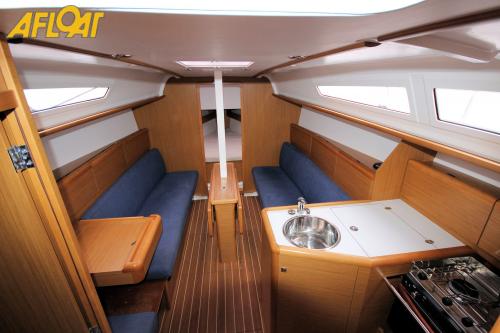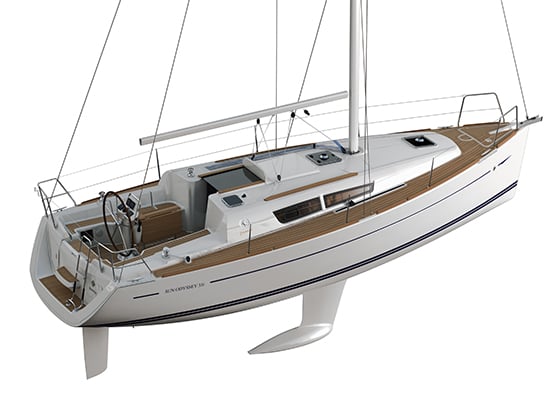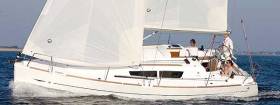Displaying items by tag: 33i
Following last week’s Afloat report on the Jeanneau Sun Odyssey 33i for sale from MGM Boats, the Irish brokerage firm has added new models of Jeanneau's Sun Odyssey 349 and its bigger sister, the Sun Odyssey 449 to Afloat's popular sailing cruisers for sale listings.
The (brand new) Sun Odyssey 349 comes with a very high specification including performance pack, autopilot, fold down transom platform, sprayhood, trim level preference pack, lazybag, electric windlass. Priced at €144,900. Advert is here
Also added is big sister in the Sun Odyssey range, the 449. This well specified boat, according to the advert has three cabins and two heads. Bow thruster, auto pilot, bimini, teak cockpit, electric windlass and electric coachroof winch. The yacht has a fin keel, standard mainsail and furling headsail and priced at €227,500. Advert is here
Jeanneau is one of the most popular sailing cruiser brands in the world. The massive French boatyard has produced yachts since 1957. The marque has been part of the Bénéteau group since 1995. MGM Boats are long time all–Ireland agents for the French brand.
See the full range of sailing cruisers for sale in Ireland through Afloat.ie here
When Jeanneau’s new Marc Lombard-designed Sun Odyssey 33i made her debut in 2010, the description “modern classic” sprang readily to mind writes W M Nixon. But then it has to be admitted that at the time, with the international yacht-building industry making special efforts to produce something that would tempt a nervous buying public into make a decision as the first tentative signs of economic recovery were hinted, all the major companies were putting in an extra effort in the design department.
Yet six years down the line, the Sun Odyssey 33i has stood the test of time very well indeed. She still looks crisply modern as she rolls off the Jeanneau production line. Here she is in all her stylish practicality, a family performance cruiser which could give a very good showing for herself in local or even national racing. Yet as the photos show, she has very pleasant accommodation with it, providing an admirable fast cruiser.

Amidst the many boats of Dun Laoghaire, her looks stand out. Photo MGM Boats

The practical accommodation works well through not being over-crowded
Certainly in the years since, new features have been added to new boats in the standard version. But the basic boat is still the same. The difference is that, if you put your name down now for a virtually new Jeanneau Sun Odyssey 33i (they ceased production a month ago) with comparable equipment to this 2010 boat, you’d be looking at paying €130,000 all in. So how come this six year old boat is attractively priced at €77,500?
Well, it’s a mixture of realism on the part of the vendor, the fact that modern production boats depreciate in value in much the same way as cars, and beyond that the costs of boat-building have never stopped rising even despite the fall in oil prices.
But one thing which most emphatically isn’t a factor in this case is that the boat has in any way been neglected. On the contrary, the one owner has been beyond fastidious in looking after this boat. And back in 2013, though she didn’t really need it at all, he decided to give her the Christmas present of the underwater hull being stripped and epoxy-coated.
Extra features include an electric windlass, Webasto heater, and – this is one for the connoisseurs – a Brunton autoprop. Were you thinking of buying a new boat, these are features which would be high on the list of requirements. But this well-presented boat has them already installed. Definitely worth a look. She’s right there at the pontoon beside MGM Boats’ office in Dun Laoghaire. See the full advert here.

Marc Lombard’s handsome design of 2010 has stood the test of time very well






























































